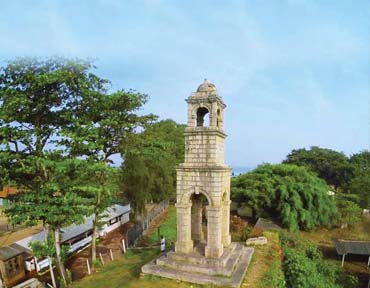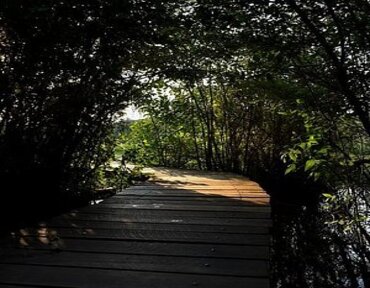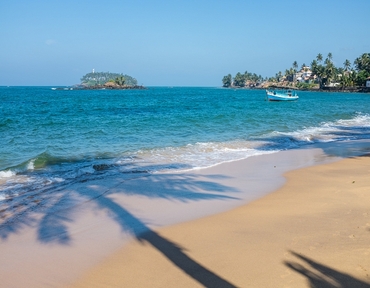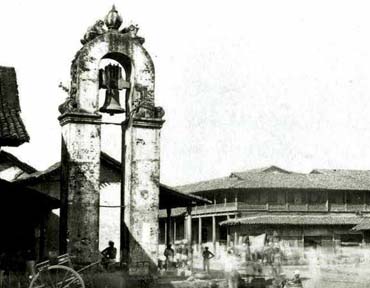


Negombo Fort was a small but important fort in Negombo, approx. 30 km (19 mile) north of Colombo, that was built by the Portuguese to defend Colombo. The fort was located on a narrow strip of land between a lagoon and an inlet of the sea. It was surrounded by a dry moat, and the gate was accessed via a drawbridge. The original Portuguese fort was a weak structure, which was captured by Dutch forces commanded by Philip Lucasz, in February 1640. The Portuguese made several attempts to retake it before they were successful in December 1640. They then strengthened the fortifications and managed to defend the fort until it was recaptured by the Dutch, commanded by Francois Caron, in January 1644. The original bastions were destroyed by the Dutch cannons during the siege of the fort. The Dutch subsequently rebuilt it in 1672 however not on the usual square pattern, but on a pentagonal one, though it had only four bulwarks, the fifth was never constructed (possibly due to the cost).

In the most urbanized district of Sri Lanka, in the heart of the city preserved with the natural environment and its potent gifts, the Kotte Rampart is truly a national treasure that exhibits the commitment of the citizens and interested and responsible parties in preserving the natural endowments for the future generations. As a wetland in the middle of Sri Jayawardhanapura Kotte the Administrative Capital, the Kotte Rampart Wetland Park has lush vegetation with commendablelly preserved biodiversity, spreading across more than 18 hectares from the 1000 hectares forest sanctuary as declared by the Wildlife Conservation in 1984.

Long Beach sparkling gold beneath the sunlight, sunny and pleasant atmosphere, golden soft sand, cool playful breeze, breathtaking ocean view, crystal blue water and boat rides as well can be associated with everything when it comes to the beaches in Sri Lanka, especially the Beruwala Beach possess all these traits that valued by many. Despite that, the Beruwala Beach is relatively untouched beach in Western coastal are where the coastal beauty is not outdone by anywhere. The long strip of beach adorned with golden sand given this piece of heaven the nickname of “The Golden Mile”, with absolutely peaceful beach experience. Thus Beruwala Beach remains a beach where the visitors can roam freely unmolested, with many offering that any visitors who miss this chance envy in green. From calm and relaxing walkways, to touch the ocean waves, to enjoys the sports, making picnics, dinners or lunch on mats, sunbathing even doing simple things like building a Sandcastle can be done on this ground undisturbed. The accessibility to the beach is relatively easy as the availability of trains, busses and other vehicles and can be reached by the main Galle Road or by the coastal trains that reach every now and then at the Beruwala Station.

Kayman’s Gate was an entrance to the former Colombo Fort located at the foot of the Wolvendaal Hill in the Pettah district of Colombo, Sri Lanka. A historic free-standing bell tower still stands at the site, now at the intersection of Main and 4th Cross Streets. The bell tower at Kayman’s Gate was used as a curfew bell ‘to mark the closing of the Castle’s gates and lights out’. Following the demolition of the fort’s walls, the bell was used to summon the worshippers to prayer and praise at the Wolvendaal Church, with the bell tower becoming part of the church’s property.